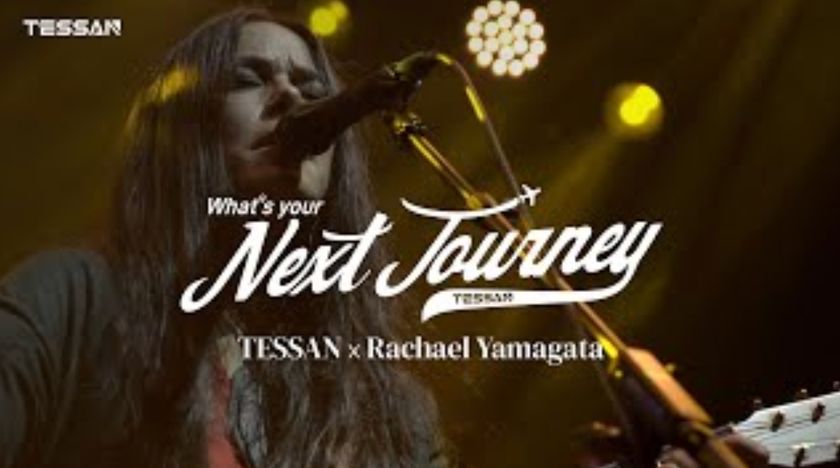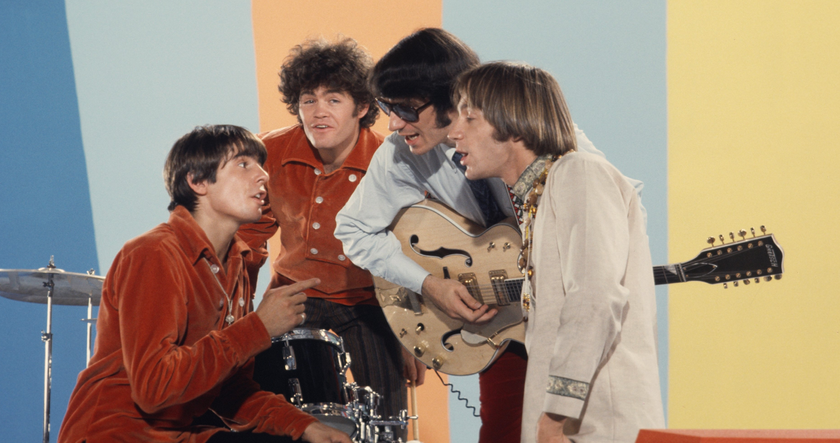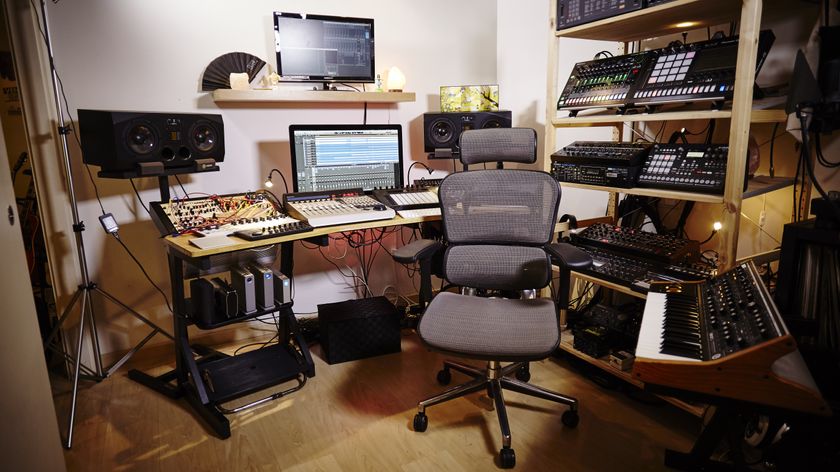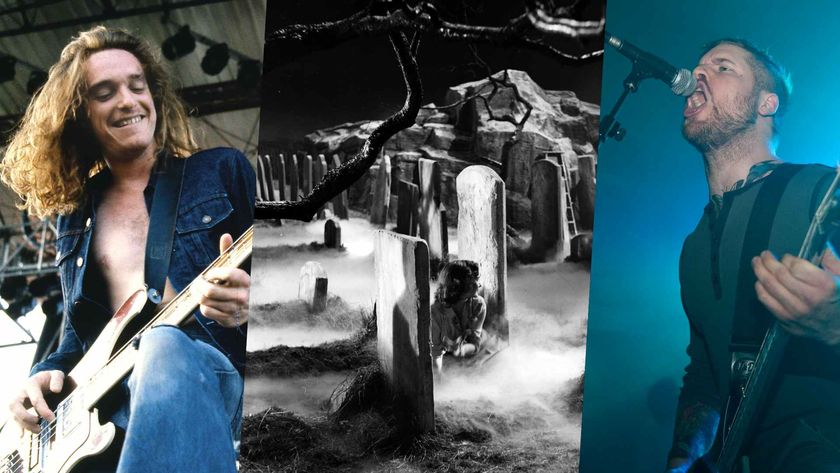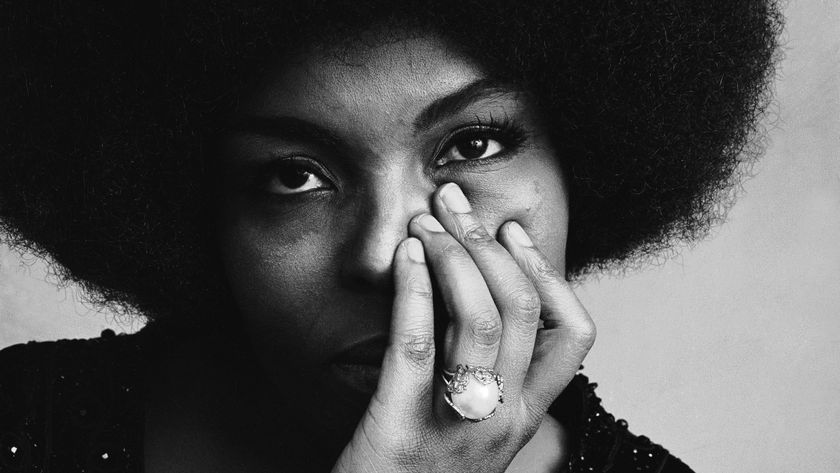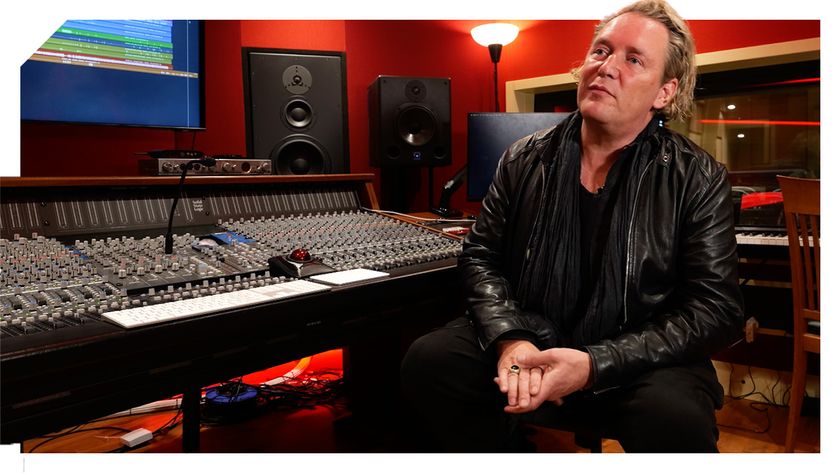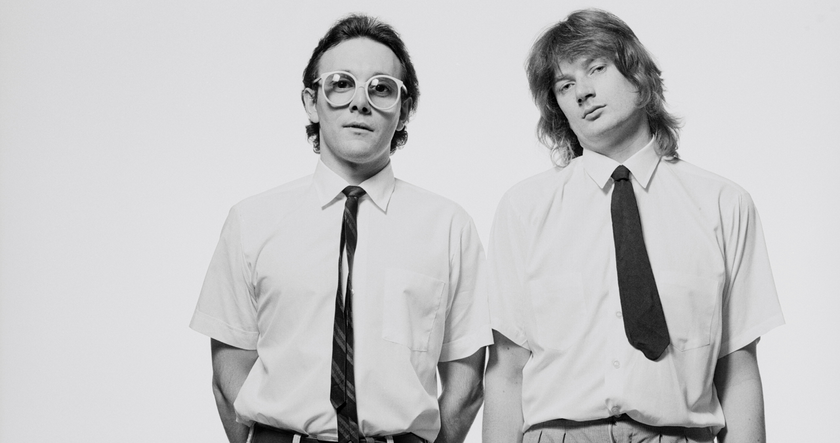“Suddenly the sun shone and it was, ‘Wow!’”: How ELO’s Jeff Lynne created his masterpiece Mr. Blue Sky - and how a little joke at the end of the song was misheard by millions
Inside the making of a miniature pop symphony
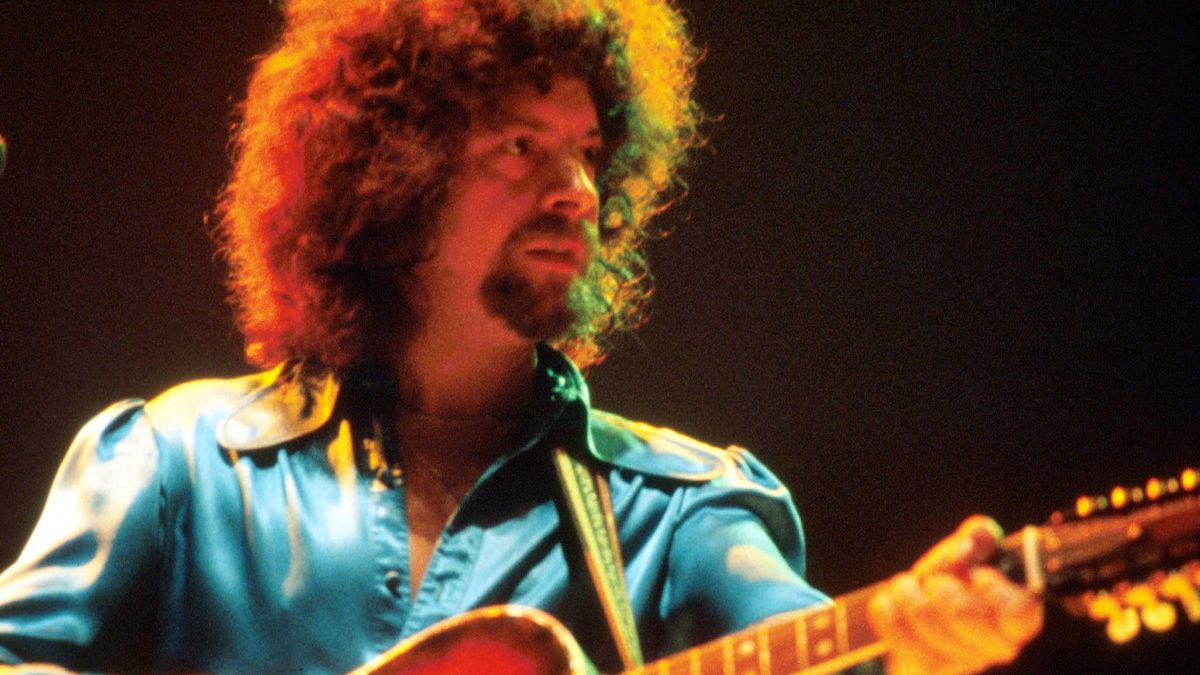
Jeff Lynne was sitting in a chalet in the foothills of the Swiss Alps when the inspiration for the song that became his biggest hit came to him.
It was April 1977 and Lynne was using the chalet as a retreat to work on songs for the seventh album by his band the Electric Light Orchestra (ELO). He was hoping that the spectacular vistas of the Jura Mountains near Lake Geneva might fire his imagination for songs for the new album. But Mother Nature had other ideas.
“It was dark and misty for two weeks, and I didn't come up with a thing," Lynne told BBC Radio 2 in October 2018.
Then one day, out of nowhere, everything changed.
"Suddenly the sun shone and it was, 'Wow, look at those beautiful Alps’. I wrote Mr. Blue Sky and 13 other songs in the next two weeks.”
Mr. Blue Sky would go on to become ELO’s signature song and their biggest hit, but it would also have a life way beyond the band in the years that followed due to its use in countless movies, TV shows and advertising campaigns.
Almost five decades since it was recorded, this upbeat, joyous song with its Beatles-inspired sound has retained a timeless, intoxicating appeal.
Get the MusicRadar Newsletter
Want all the hottest music and gear news, reviews, deals, features and more, direct to your inbox? Sign up here.
By the time Jeff Lynne arrived in Switzerland to begin work on the album that would become Out Of The Blue, he had elevated ELO to global superstardom on the back of their hit 1976 album A New World Record.
The band embarked on a massive US tour in support of the album from September 1976 to April 1977, when Lynne headed out to Switzerland to start work on the follow-up. Given the colossal success of A New World Record, expectations were immense.
Ever since the formation of ELO, the whole aim had been to create a band that fused pop with classical music, and to bring the orchestral instruments to the fore.
It was Roy Wood, guitarist, vocalist and songwriter with Birmingham band The Move, who first came up with the idea back in 1968, inspired by The Beatles on tracks such as Penny Lane, I Am The Walrus and A Day In The Life.
In 1969, Wood asked Lynne of fellow Birmingham band The Idle Race to join The Move. Lynne was excited by this pop-classical fusion and in July 1970, Wood added multiple cellos to a Lynne-penned song called 10538 Overture.
It was the first ELO song and kick-started the band’s career.
In December 1971, they released their debut album with core band members Wood, Lynne and drummer Bev Bevan.
By mid-1972, Wood had left to focus on his new band Wizzard, and Lynne stepped up to lead ELO, becoming its chief songwriter and taking on lead vocal duties.
By then, the band consisted of Lynne, Bevan, Mike Edwards (cello), Wilfred Gibson (violin) and Richard Tandy (keyboards), alongside new recruits Mike de Albuquerque and Colin Walker on bass and cello respectively. In 1973, Gibson and Walker left the band, Mik Kaminski joined on violin and original member Hugh McDowell returned on second cello.
Creating a decent live sound was a challenge for the early ELO, which Lynne once reportedly admitted “sounded like an accident in a violin warehouse”. But by the time ELO took to the stage at the 1972 Reading Festival, all the orchestral instruments had been fitted with pick-ups, resulting in a radically-improved on-stage and out-front mix.
An audacious version of Chuck Berry’s Roll Over Beethoven, featuring the first few lines of Beethoven’s Fifth Symphony, was a highlight of their second album ELO 2 in 1973 and produced their first US hit.
The 1974 album Eldorado yielded the band’s first Top 10 single with Can't Get It Out Of My Head, and the follow-up album Face The Music (1975) generated the hits Evil Woman and Strange Magic.
Then came the massive hit album A New World Record (1976), with standout tracks such as Livin’ Thing. This was the record that Lynne sought to better as he looked out from his Swiss chalet in the spring of 1977.
In literal terms, the lyrics for Mr. Blue Sky simply reflect Lynne’s joy and relief at finally having a vista to inspire him. “Sun is shinin' in the sky/There ain't a cloud in sight/It's stopped rainin', everybody's in the play/And don't you know /It's a beautiful new day…”
Lynne told Rolling Stone magazine: “I remember writing the words down… there was this enormous view forever, and the sky was blue.”
Musicland Studios in Munich was the location for the recording of the song in the summer of 1977. Lynne reportedly wrote the verses at the chalet and the choruses in the studio.
From the very first bar, Mr. Blue Sky is a thrilling, invigorating song, brimming with strong melodic hooks and delivered at a breakneck 178 bpm.
Staccato piano stabs intro the track alongside a transistorised weather forecaster-style voice. Ten seconds in, a whopping snare fill from Bevan launches the whole thing into life, with guitar, keys, bass and drums delivering a powerful, thumping sound.
The pounding piano vamps evoke Paul McCartney’s middle section from The Beatles’ A Day In A Life, but ultimately this is an impeccably-crafted song that showcases Lynne’s formidable songwriting talent. Mr. Blue Sky never sits still, ascending, swooping and enthralling throughout.
Fifteen seconds in and Lynne’s vocals enter the mix. “Sun is shinin' in the sky…” he begins as the deft chord structure of F- Em7-A-Dm-G-Em-A-Bb-Bb/C-F-Bb/C shifts beneath.
On the second verse, cello emerges in the form of simple two-note bowed motifs that bolster the vocal phrasing. One prominent feature is a vocoder, and Lynne was allegedly inspired to use this effect by a 1940s children’s audio series called Sparky’s Magic Piano.
For all its sonic adventure, the song doesn’t hang about. After only a minute, two verses and a chorus have been dispatched. And at 1:12, Lynne unleashes a beautifully clipped and creamy solo.
According to the January 2013 issue of Guitar Player magazine, Lynne used his 1974 goldtop Les Paul through a Fender Vibroverb amp and an unidentified boost pedal for his guitar parts on Mr. Blue Sky. “No big, complicated stuff going on there,” Lynne told the writer Michael Molenda.
At 2:21 the full squelchy magnificence of the vocoder emerges on the phrase ‘Mr. Blue Sky’. The track builds with deep, resonant cello sweeps on the stops and ascends to ever more giddy heights.
At 3:15 a descending walking bass line anchors some mad high-in-the-mix choral refrains. Another prominent element is a cowbell-like sound, which was actually Bev Bevan tapping out 4/4 rhythm on a fire extinguisher throughout.
At 3:40 the whole song is seemingly over before a driving 4/4 guitar/bass/drums chug piles in to herald the start of the song’s coda, with its sweeping strings, soaring operatic choral refrains and rich flowing piano.
It’s a stunning finale to the song.
And the vocoder line in the coda is a witty finishing touch. Many believed those five syllables to be: "Mister Blue Sky-y." But in 2012, Lynne told BBC's The One Show: "It actually says, 'Please turn me over', because it was the end of that side of the album."
This coda was included on the UK single but not the US version.
Mr. Blue Sky was released as a single in the UK on 20 January 1978. It reached No. 6 in the UK and No. 35 in the US.
Critics lapped it up. "This uptempo tune guarantees Lynne's legend as both writer and producer and shows off ELO's unique sound,” gushed Record World, while a retrospective review from Donald A. Guarisco in AllMusic concluded that Mr. Blue Sky was a "miniature pop symphony" and a "multi-layered pop treat that was a pure Beatles pastiche”.
In an interview with Dutch broadcaster NTR in 2017, Lynne recalled that he used a 30-piece string section and a 20-strong choir on Mr Blue Sky. But he also noted that recreating the song in a live setting was always a challenge.
“You know, The Beatles quit because they couldn’t play Paperback Writer,” Lynne told NTR. “That’s why they quit playing on stage. And here I was with all these giant 30-piece orchestras on record and pianos, guitars and choirs. Trying to do it with seven people you know? Which wasn’t very easy to recreate… so I wasn’t very happy with the sound. I didn’t like it at all, the live sound. It was just not much fun for me, being the producer.”
In 2012, Lynne re-recorded Mr. Blue Sky and several other ELO recordings and released them on the album Mr. Blue Sky: The Very Best Of Electric Light Orchestra.
“I started off with Mr. Blue Sky itself,” he said. “And tried it out to see what would happen now 35 years later. How I would approach it… I played it to my manager and he said, ‘Wow, that sounds so much better than the old one’. And everyone else seemed to be very pleased with them too. So we said ‘[let’s] make an album’.”
On the re-recorded version he took the decision not to include the coda. “I didn’t do the double ending,” he told NTR in 2017, “because that was part of a suite when I originally did it and it didn’t sort of make sense to me to not be part of that little suite.”
When the re-recorded Mr. Blue Sky was finished, Lynne sat down and took a long, hard look at the new version. “I listened to it… as I do with my kind of perfectionist look at it. And there isn’t really a duff bit in there. There isn’t really a bad bit. All the song really works and joins together properly and it becomes like a complete, unified thing. And I don’t go ‘Oh I wish I hadn’t put that bit in’ or ‘I wish I’d done this there’. I actually go ‘That’s how it is and it’s okay’.”

Neil Crossley is a freelance writer and editor whose work has appeared in publications such as The Guardian, The Times, The Independent and the FT. Neil is also a singer-songwriter, fronts the band Furlined and was a member of International Blue, a ‘pop croon collaboration’ produced by Tony Visconti.

“White whale! Holy Grail!”: How the epic tale of Moby-Dick inspired Mastodon’s greatest album
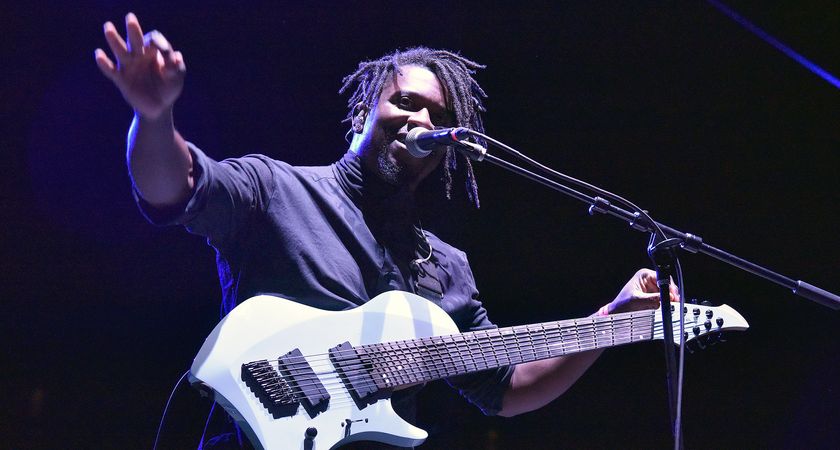
“I really like that you can sweep pick on this thing, so it gets you the nylon-string sound without the physical limitations”: Tosin Abasi issues update on Abasi Concepts' much-anticipated hybrid nylon-string





